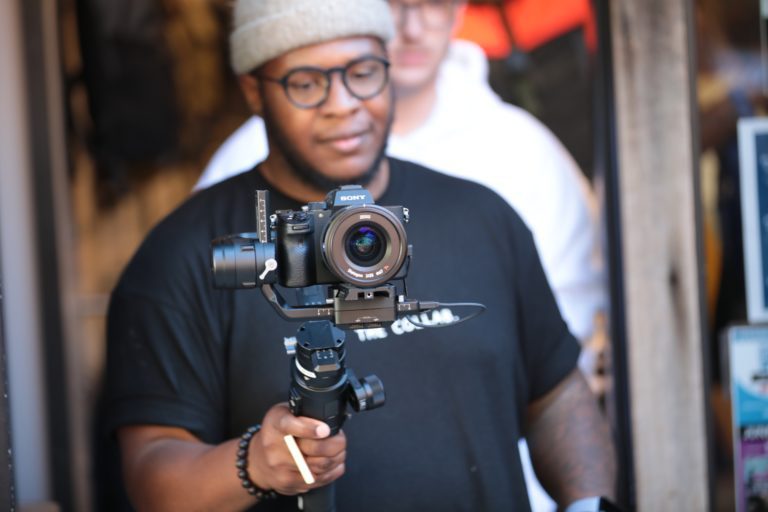3 Tips To Become a Quality Content Creator

Becoming a content creator is a relatively recent, yet rapidly growing path. Content creation for many is a hobby, for some a side gig, and–when done thoughtfully–it can become a career.
Simply defined, content creation involves creating specialized content and then publishing it on social media platforms with the intent of getting people to see and interact with it in some way, whether it be comments, likes/reacts, retweets/republishes/shares, or follows/subscribes. With high engagement comes the potential of monetizing the content via sponsorships or the app directly. And, with monetization, content creating now becomes a viable source of income and potentially a career.
Now, I know what you’re thinking: how does someone even get there? Where do I start? How can I turn my passion, hobby, education, life into something that people want to interact with?
Here are 3 tips to help you become a quality content creator:
1. Understand your niche:
Your niche is determined by the general audience that consumes and interacts with your content the most. When you begin creating content, think carefully about your topics and what you want your niche to be. Niches can be unexpected too, you might find that your content performs well in front of audiences that you may not plan for.
Niches can either be broad or specific, depending on what you and your audience like. Take Bailey Sarian for an example. She is a YouTube creator that started YouTube doing makeup tutorials as her main topic, which is a broad niche. Then, she moved into a more specific niche of makeup and true crime with her “Murder, Mystery, and Makeup Monday” videos, where she discusses a true crime while doing her makeup.
Now, this is not to say that your content is confined to whatever niche you choose or fall into, but understanding and using your niche to your advantage will help obtain and maintain content engagement.
2. Do Your Research:
In addition to understanding your niche, you have to do your research. I mean this in three ways: 1) look at channels/pages that make similar content to you, 2) know common keywords associated with your content, 3) keep adjusting your approach to content creation.
Think of your platform as a business and your content as a product that you’re trying to sell: in order to make your product stand out, in order to make people want to invest themselves in your content, you have to be aware of who your competition is and what they are doing to “sell” their own content. This does not mean copying, but it does mean understanding, internalizing, improving, and diversifying your content in order to reach and hold your audience’s attention.
The second part to research, understanding key words, has to do with Search Engine Optimization, or SEO. Researching SEO and figuring out which keywords are most researched for your niche on your platform(s) will help you pop up in search results. For example, if you run a food blog and the most searched term relating to food is “keto,” in order to get more views on your blog, you may want to post one or more recipes or articles using the word frequently. A way to do this on other social media platforms is to use SEO keywords in captions/descriptions, tags, and hashtags.
The third and final part to research is keeping your content up to date on current events. Continuously altering your content to keep up with events relevant to your niche and audience helps to maintain your audience’s attention as well as upkeep your credibility and relatability.
3. Understand what each platform can do for you:
Consistency, regardless of the platform, is key in becoming a quality content creator. And many creators make the mistake of trying to make a consistent presence on every available social media platform. Although it is good to have multiple platforms for your audience to find you on, a great content creator tends to have one primary platform that they put most of their time and energy into, and then a few other secondary platforms that they post on on a quasi-regular basis.
It is important to understand what each platform can do for you and your content so that you can be intentional with your platform usage.
- Instagram: Instagram is a solid primary platform for people who are into artistic activities, travelling, personal blogging, aesthetic feeds, etc. You can post videos, pictures, “Stories,” and interact with followers easily. It is also a great, universal secondary platform that works with any other.
- Facebook: Facebook is not generally used as a primary platform, but it is a great and universal secondary platform to repost videos/pictures to get even more engagement.
- YouTube: YouTube tends to be mostly a primary platform where creators spend most of their time and energy. YouTube tends to bring loyal and regular content consumers. YouTube also makes a great secondary platform for TikTok creators with a consistent following that can transfer over and Podcast creators who want to offer another platform for listener’s hear their podcast on.
- TikTok: TikTok does not make a great secondary platform unless a creator already has a dedicated following on other video based platforms. TikTok, with its For You Page, can give creators a consistent niche, but not necessarily a consistent following or engagement rate.
- Twitter: Twitter is a great and universal secondary platform. To use Twitter as a primary platform requires a mastery of SEO keywords.
- Twitch: Twitch is a platform that is a niche of its own, specializing in live streams of people playing video games. This is generally a primary platform, and it pairs really well with YouTube where you can post streaming videos to get more views
- Blogs: Blogs are great for long-form written content; it is a great way to combine long-form writing and photos or videos. Blogs can be both primary and secondary content and pair best with Instagram, Facebook, or even YouTube.
- Podcasts: Podcasts are awesome for interviews, educational content, motivational content, stories, talk shows, and more. Podcasts are pretty equally split between people who use them as a primary and secondary platform.
Finally, along with making your content thrive, it is important to make sure that your content also works for you. Being a content creator takes a lot of dedication and hard work that can sometimes leave the creator worn out. But, it is important to allow breaks in your content schedule and to remember that audiences can sense, through posts, if a creator does not enjoy making the content that they are putting out. Always put out content that you are proud of.
Content creation is a new and wonderful path to explore in this current age of technology. It is a highly sought after and competitive field, and it is also a highly rewarding one. Take and apply these tips and you will be on your way to becoming a quality content creator.





